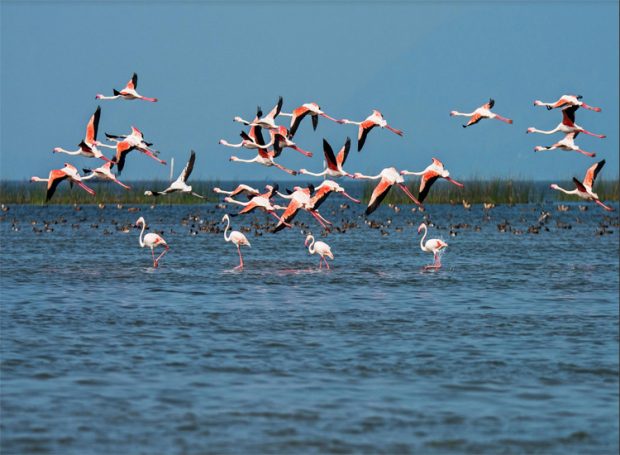
Chilika lake a hotspot of biodiversity
PTI, Feb 4, 2022, 1:31 PM IST

Chilika lake, Asia’s largest brackish water lagoon, has re-established itself as one of the hotspots of biodiversity and shelters a number of endangered species listed in the IUCN red list of threatened species.
The lake is a unique assemblage of marine, brackish and freshwater eco-system with estuarine characters. The lagoon houses about 155-165 dolphins and 10.5 lakhs water birds, representing 105 different species.
“For the first time, near-threatened ferruginous ducks and a group of Eurasian otters were spotted in the lagoon in the 2022 Flora and Fauna Survey in Chilika Lake carried out on February 1,” an official in the Chilika Development Authority (CDA) said.
This year, 156 dolphins were sighted with a good number of them in the Rambha Bay area along with the outer channel. The range of 155-165 was inferred from year-long monitoring by CDA, the survey report said.
The report also mentioned that dolphins are now colonizing new areas of the Chilika lagoon and this gives hope for this endangered mammal. The movement has been facilitated by clearing of gherries, it said.
Irrawaddy dolphins in India are protected under Wildlife (Protection) Act 1972, ClTES (Appendix-l), and IUCN Red List, the survey report said, adding that the annual survey was conducted by the ‘Transact Survey Method’ followed worldwide for a population of aquatic mammals.
On the water birds, the report said that about a thousand near-threatened Ferruginous Ducks were sighted for the first time in the lagoon during the survey, besides 2,000 greater flamingos at Nalabana. Two uncommon species, the red-necked stint, and the Woolly-necked stork were spotted in the marshland of Parikud and Mangalajodi, respectively, it mentioned.
“The findings are favorable since the waterbird census conducted by the Chilika Wildlife Division during the first week of January had put the number at 10,36,220 of 103 species,” it said, adding that a total of 2,86,929 birds of 75 species were spotted at Nalabana sanctuary alone during the one-day survey.
The most common migratory ducks found in Chilika were northern pintail, gadwall, and Eurasian wigeons, each being more than 1.5 lakh. The mudflats of Nalabana and other regions of Chilika are now exposed as a result of the significant drop in water level and is habitat to more than 1.2 lakhs of waders or shorebirds such as the black-tailed godwit, little stint, ruff, curlew sandpiper, and lesser sand plover compared to the January 4 census.
The carnivorous predators were also spotted near the bird’s island in the southern sector of Chilika lake. This species has also been camera trapped during fishing cat estimation, it said.
Udayavani is now on Telegram. Click here to join our channel and stay updated with the latest news.
Top News

Related Articles More

A 4.45 billion-year-old crystal from Mars reveals the planet had water from the beginning

Charmadi Ghat highway set for widening: Work likely to begin in January 2025

Key to past: Indore man collects 570 typewriters from across the world

Kambala: Tradition and modernity in coastal Karnataka

Dairy farmers in K’taka border areas selling milk to Kerala for higher price!
MUST WATCH
Latest Additions

Wanted to kill Ajmal Kasab who caused so much of pain, recalls 26/11 terror attack victim

Two retired revenue officials among four arrested in land grabbing case in Jammu

Kerala govt to revise manual for junior doctors, house surgeons

State can interfere with religious practices if they impede development, equality rights: SC

Four cheers at MP’s Kuno park; cheetah Neerva gives birth to cub quartet
Thanks for visiting Udayavani
You seem to have an Ad Blocker on.
To continue reading, please turn it off or whitelist Udayavani.


















